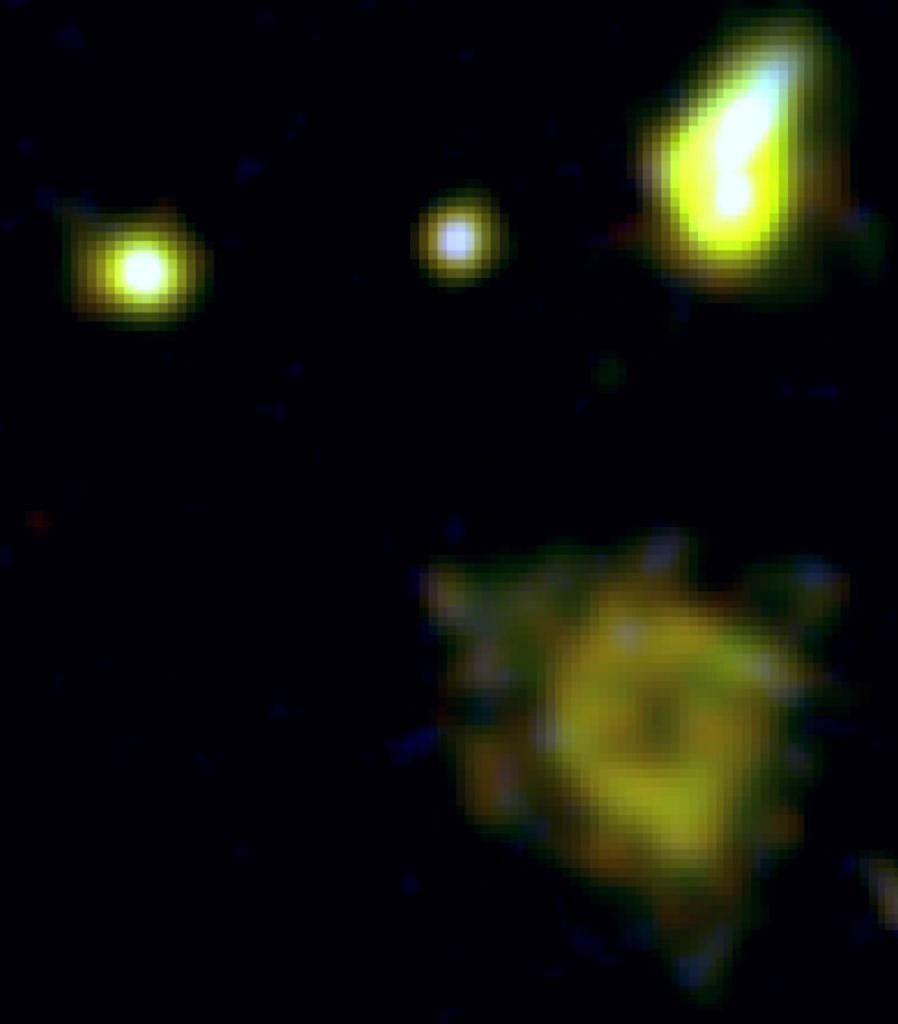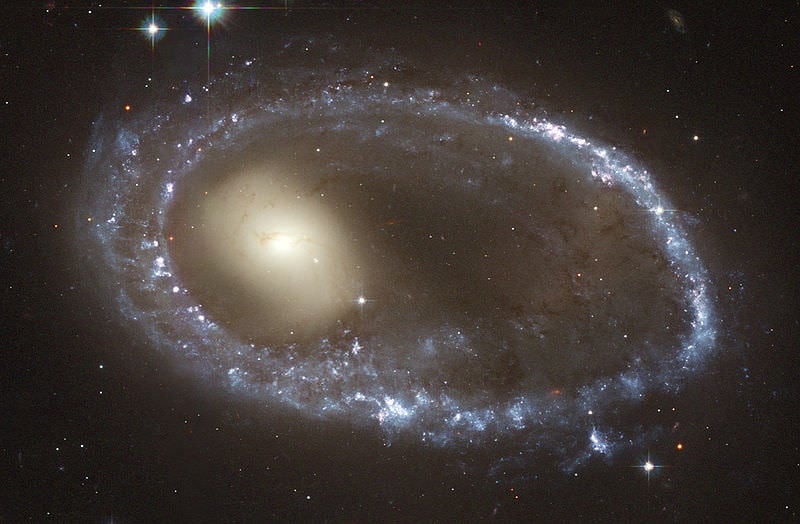One of the greatest benefits to come from space telescopes and ground-based observatories that take advantage of advanced imaging techniques is their ability to see farther into space (and hence, further back in time). In so doing, they are revealing things about the earliest galaxies, which allows astronomers to refine theories of how the cosmos formed and evolved.
For example, new research conducted by the ARC Centre of Excellence for All Sky Astrophysics in 3 Dimensions (ASTRO 3D) has found a "ring galaxy" that existed 11 billion years ago (about 3 billion years after the Big Bang). This extremely rare structure, which the team describes as a "cosmic ring of fire," is likely to shake up cosmological theories of how the cosmos has changed over time.
The study that describes their discovery was recently published in the journal Nature, titled " A giant galaxy in the young Universe with a massive ring." The team responsible was led by Dr. Tiantian Yuan (an ASTRO 3D Fellow) and included members of the ASTRO 3D consortium, the Centre for Astrophysics and Supercomputing at Swinburn University, the Cosmic Dawn Center (DAWN), and multiple institutes and universities.
The galaxy, designated R5519, is located about 11 billion light-years from the Solar System and is roughly as massive as the Milky Way. At the center of the structure is a massive hole measuring about two billion AUs in diameter. In other words, its two billion times the distance between the Earth and the Sun and million times larger than the supermassive black hole (SMBH) at the center of M87 (the largest observed to date).
As Dr. Yuan described the object in a ASTRO 3D press release:
"It is a very curious object that we’ve never seen before. It looks strange and familiar at the same time. It is making stars at a rate 50 times greater than the Milky Way. Most of that activity is taking place on its ring – so it truly is a ring of fire."
To identify the structure of this unusual object, Dr. Yuan and here colleagues from Australia - as well as researchers from the US, Canada, Belgium, and Denmark - relied on images captured by NASA's *Hubble Space Telescope* (HST). They then combined this with spectroscopic data of R5519, which was gathered by the W.M. Keck Observatory in Hawaii.
Ordinarily, ring galaxies form as a result of internal processes, but in some cases, they are created by violent encounters with other galaxies. In the local Universe (within 1 billion light-years of the Solar System), "collisional ring galaxies" are about 1000 times rarer than the internally-created type. After analyzing the Hubble images and spectra obtained by Keck, the team concluded that R5519 is likely the result of a collision.
This makes R5519 the first collisional ring galaxy to be observed during the early Universe. Given its distance, which means that R5519 existed about 10.8 billion years ago, it is now apparent that collisional ring galaxies have always been extremely uncommon. Therefore, studying R5519 will help astronomers determine when spiral galaxies began to develop in our Universe.
Dr. Ahmed Elagali, a member of the ASTRO 3D consotrium from the International Centre for Radio Astronomy Research (a co-author on the study), added: "Further, constraining the number density of ring galaxies through cosmic time can also be used to put constraints on the assembly and evolution of local-like galaxy groups."
In addition, this discovery has implications for the study of how galaxies like the Milky Way formed. Said Professor Kenneth Freeman from the Australian National University (another co-author on the study):
"The collisional formation of ring galaxies requires a thin disk to be present in the ‘victim’ galaxy before the collision occurs. The thin disk is the defining component of spiral galaxies: before it assembled, the galaxies were in a disorderly state, not yet recognizable as spiral galaxies.
By examining R5519, astronomers are effectively looking back to when the Universe was just 3 billion years old, a time when thin disk galaxies were only starting to assemble. In comparison, the thin disk of the Milky Way began to assemble about nine billion years ago, roughly 2 billion years after the structure of R5519 was already established.
In this respect, says Prof. Freeman, the discovery of a collisional ring galaxy is the early Universe is an indication that the assembly of think disks in spiral galaxies occurred over a more extended period than previously thought. As always, our ability to probe the early Universe in greater detail is revealing things that allow astronomers to refine their theories of how it all began and evolved over time.
*Further Reading: ASTRO 3D, W.M. Keck Observatory, Nature*
 Universe Today
Universe Today


